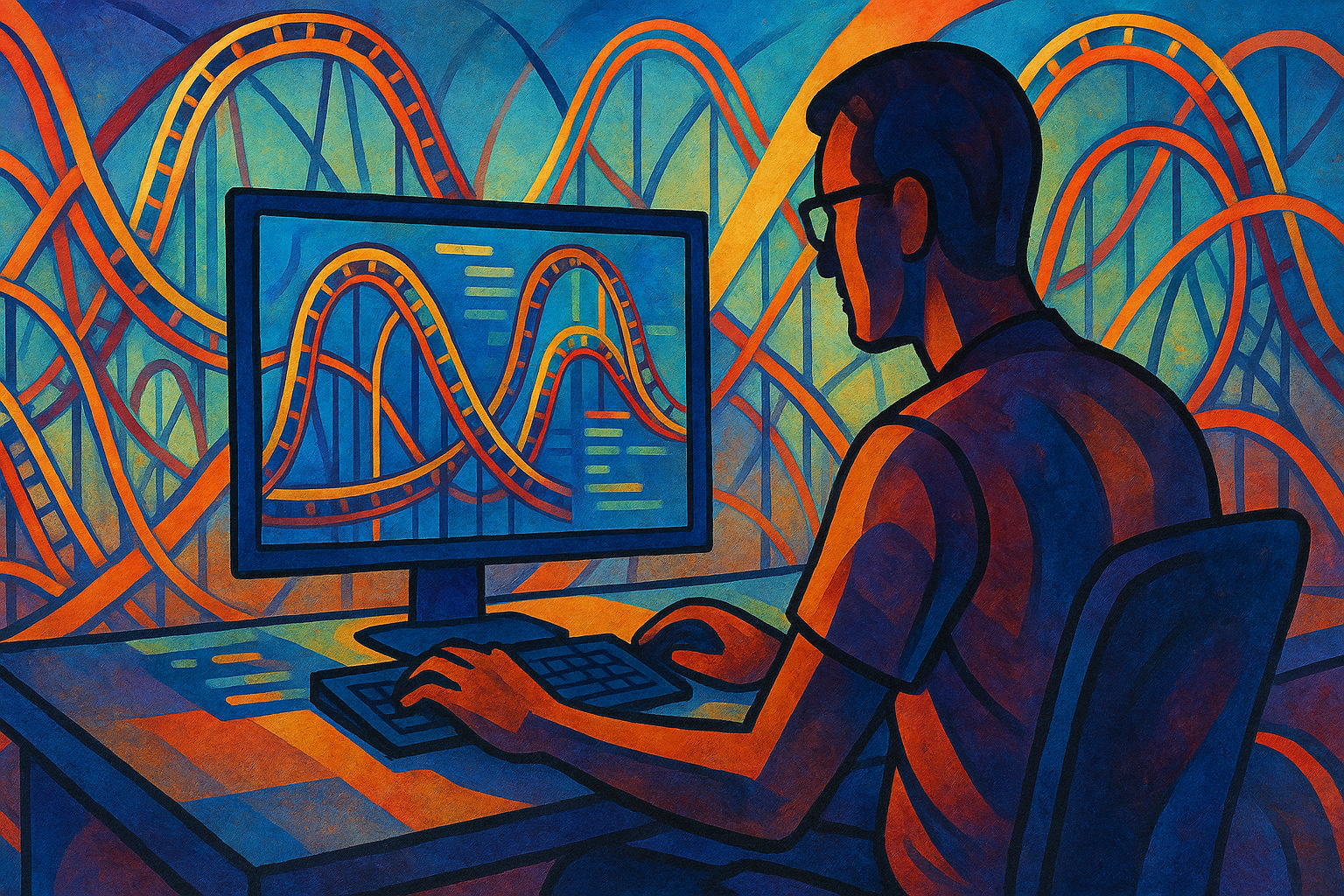Integrating Google Analytics with Google Ads
Learn how to effectively integrate Google Analytics with Google Ads for better tracking and optimization of your campaigns.
Published: 2024-08-09
By: Michael Mares

I find this story incredible so I had to share it.
“Mom, I’m home!” you shout, tossing your school bag into the corner of your room.
It’s a fresh May afternoon in 2002, and you’ve just gotten back from school. The breeze gently moves your curtains, casting shadows on the Blink-182 posters on your wall.
You press the power button on your old Windows computer and head to the kitchen for a snack, knowing the startup will take a while. You can’t wait to dive back into your favorite game — Roller Coaster Tycoon.
One of the most popular titles of the early 2000s, Roller Coaster Tycoon (RCT), was iconic.
It had everything: strategic gameplay, money management, advanced physics that could send carts flying off the tracks, and stunning isometric graphics that ran at 60fps or more.
The game was truly outstanding for its time — an engineering marvel.
But have you ever wondered how many people it took to program all of this?
Here’s the surprising and motivational truth: Roller Coaster Tycoon was developed by one guy in his garage. Just one.
And that one guy, Chris Sawyer, wrote the entire game in assembly language.
To put that into perspective, it’s like building a massive replica of New York City out of 1x1 LEGO bricks — in only 32 colors.
In his early 30s, Chris made the decision to use assembly language to achieve better efficiency.
To fully appreciate this, you need to understand that Chris had to create his own game engine before he could even start building the game.
It’s akin to mixing your own paint before you start painting or building a guitar before you can start practicing.
Chris effectively invented the game’s physics, space, time, colors, graphics, and a whole lot more — all in a programming language that’s only a step above the 1s and 0s of machine code.
If you don’t find that impressive, your standards must be incredibly high.
Chris had already established himself as the GOAT of the strategy genre, making a tidy profit with Transport Tycoon.
That game focused more on the economics of being a railroad magnate rather than screaming your lungs out on a roller coaster, but it provided Chris with a nice little rainy-day fund to support his game creation.
After profiting from Transport Tycoon, Chris took some time off to travel and explore the world.
Roller coasters were never a particular interest of his until he encountered them during his sabbatical. After trying a few rides, he got hooked instantly. He spent months traveling across the U.S., visiting different parks and trying out various roller coasters.
Chris was due to start working on a sequel to Transport Tycoon, but the roller coaster idea had taken hold of him.
His newfound passion fueled the project, and he spent weeks playing with the physics, understanding the mathematical formulas underlying roller coaster functions.
Months later, Chris went all-in on this new project, pouring time and money into what we now know as Roller Coaster Tycoon.
Chris’s story teaches us that inspiration often waits in places we might not initially expect.
It might come from taking a roller coaster ride, for instance. Hearing Chris’s story for the first time was a wake-up call for me in terms of my own productivity.
It also made me feel a bit sad — a reminder that most of us won’t be the sole programming mastermind behind a massively successful game. But that’s okay too.
We all have our gifts and it’s up to us to realize them. In our own special ways.
But why does this all matter?
Chris found his thing — something he could do for hours on end, fully immersed and deeply enjoying it.
And it brought him incredible results. His brain was wired just right to build a massive game in a programming language that most people dread.
There’s a thing like that for you too! If you haven’t found it yet, that doesn’t mean it doesn’t exist. It’s still out there, waiting for you to discover it.
Fun fact: When they made a remake of this game for mobile devices in the late 2010s, they had to move away from assembly language and rewrite the entire code. It took a team of engineers more time to do this than it took Chris to create the original version — by himself.
Learn how to effectively integrate Google Analytics with Google Ads for better tracking and optimization of your campaigns.
Learn how to effectively target and segment your audience in Google Ads to improve campaign performance and ROI.
Explore advanced automation techniques for Google Ads to scale your campaigns and improve efficiency.
Learn the fundamentals of Google Ads automation and how to implement basic automation rules for better campaign management.
Maximize your Google Ads ROI with this automated budget allocation script that dynamically shifts budget from underperforming to high-performing campaigns.
Learn advanced strategies for managing your Google Ads budget effectively to maximize ROI and campaign performance.